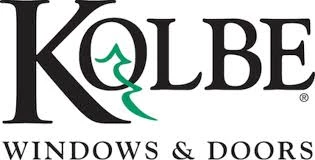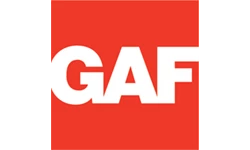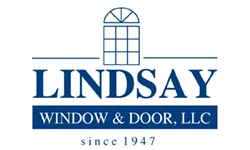
Have you ever wondered why your roof seems to be perfectly fine in light drizzle or moderate showers, but as soon as heavy rain comes pouring down, you’re left dealing with unexpected leaks?
Some leaks are caused by damage and age, while others are caused by improperly installed roofing elements or a lack of roofing maintenance.
Whatever the cause, it’s important to address even a small roof leak as soon as possible. While your roof might hold up well in most cases, those torrential downpours can reveal some hidden vulnerabilities.
Why Does My Roof Leak Only in Heavy Rain?
Many homeowners notice their roof does fine in light or moderate rain, but as soon as a heavy storm comes in, they’re left with a leaky roof.
If your roof leaks only in heavy rain, it might have small issues or weak spots that are put to the test during heavy rainfall.
These weak spots could be cracked or missing shingles, roof debris, damaged flashing, or poorly sealed roof openings. The heavy rain simply pushes more water into these areas, making the leaks more noticeable.
Heavy Rain Roof Leak Causes
Several different issues can cause your roof to leak in heavy rain. Here’s an overview of what might be causing the problem.
1. Chimney Problems

When you have a leak, most homeowners suspect the roof, but in some cases, the chimney is the culprit. This is because metal flashing is the only thing that stands between your chimney and heavy rains. If this metal flashing is damaged, or if the flashing wasn’t installed properly, water can easily seep into your home.
If you have an older brick chimney, heavy rains may have saturated the mortar joints, leading to water leakage. Or, water may simply be coming in through the top of your chimney. This usually happens when there’s an issue with your chimney’s chase top.
2. Pipe Boot Issues

Another common reason for roof leaks, especially during heavy rain, is when the boot around a plumbing pipe or another opening on the roof starts to fail. These boots are designed to seal off the base of roof pipes, making sure water doesn’t seep into your home.
The most widely used type of pipe boot is made from a synthetic rubber called neoprene. Over time, exposure to sunlight breaks down the neoprene material, causing the boot to develop cracks.
If the neoprene cracks, water travels down the pipe and can end up inside your home, whether it’s a closet, kitchen, bathroom, or another space. Pipe boots generally last about 10 years, but this may change depending on the local weather conditions and the presence of pests.
3. Damaged Roof Flashing

As we mentioned earlier, flashing is an important defense system for your roof. Flashing is installed in many vital areas of your roof to keep water, debris, and other elements out of your home. When your roof flashing becomes damaged, you’ll quickly start to see roof leaks throughout your home.
If you have a new roof that leaks, your flashing likely wasn’t installed properly. While it can be frustrating to discover your new roof has problems, a flashing replacement will typically fix the leak.
4. Skylights

There are two main issues that might cause a skylight to leak—improper insulation and condensation.
The seal on your skylight may have been installed incorrectly or, if your skylight is older, the seal may have worn down over time. Fortunately, a skylight doesn’t need to be replaced entirely to fix a leak. Typically, a window expert can take out the cladding, remove the flashing kit, install a water shield, and replace the flashing kit to create a better seal.
On the other hand, if your skylight’s seal is in good condition, you may simply be dealing with skylight condensation. This happens when the outside temperature is drastically different from the temperature on the inside of your home, like in winter.
5. Damaged Shingles

Over time your roof’s shingles will wear down and no longer be able to keep heavy rains out of your home. Even if your shingles can withstand a lighter rain, leaking on occasion is still enough cause to have your shingles replaced.
6. Improperly Installed Roofing Nails

Unfortunately, something as simple as roofing nail placement can cause water to seep into your home. This is because nails that aren’t completely driven into your roof, or nails that are driven sideways, catch rainwater and carry it into your home.
7. Debris

If you haven’t cleaned your roof or scheduled roof maintenance in some time, roofing debris may be causing your leak. This is because leaves, sticks, and other debris accumulate in your roof’s valleys over time. These piles collect water during heavy rains, which stops water from draining off your roof properly.
Over time these pools make your roof more susceptible to water leaks, as water may creep under shingles or through improperly driven nails.
Flat Roof Leaks in Heavy Rain

Certain flat roofs may lack the necessary drainage to handle heavy rainfall effectively. If you have a roof that doesn’t have proper drainage, you’ll likely need to install gutters and downspouts to direct rainwater away from the foundation.
You’ll also need to regularly clean out debris from gutters and downspouts. Debris that builds up on your roof can trap water and prevent it from draining properly.
Homeowners with flat roofs may also run into sealing issues. If the eaves and flashing are not well-sealed, a leak can easily make its way inside.
It’s worth noting that flat roofs may not leak in the same way as roofs with more slopes. Instead, you might notice drip marks along your walls.
Additionally, water can accumulate around the foundation perimeter of your home, leading to water damage and other issues. This pooled water may seep through cracks, siding, or foundation walls, causing water damage in your basement or crawl space.
Metal Roof Leaks in Heavy Rain

The biggest culprit behind metal roof leaks is often the screws used to secure the panels to the building’s frame. How these screws are designed and installed can significantly impact your roof’s long-term performance.
While these screws create openings in the roof, they usually don’t seal them properly. Even when sealant is applied, screws that are not driven in properly, driven in too far, or put in at the wrong angle can all create openings for moisture to seep beneath the metal panels.
Your metal roof may also leak in heavy rain if the sealant or flashing needs to be replaced or if the roof was installed with overlapping seams.
How Do I Stop My Roof Leaking in Heavy Rain?
The best way to stop your roof from leaking in heavy rain is to schedule a professional roofing inspection. During this appointment, a roofing technician will closely inspect every vital area of your roof for damage. This will help pinpoint the issue causing the leak and determine whether you need repairs or roofing replacement.
Keep Leaks at Bay with a New, High-Quality Roof
If your roof leaks during heavy downpours, reach out to the roofing experts at Olson Windows. Our roofing contractors have decades of combined experience pinpointing roof issues and providing quality, long-lasting solutions.
Our roofing company is proud to be the trusted choice for roofing in Barrington.





















